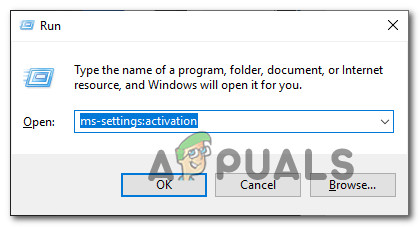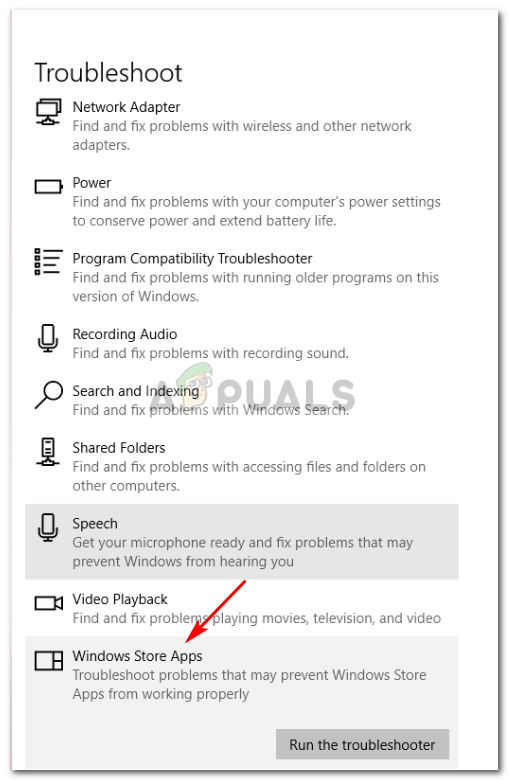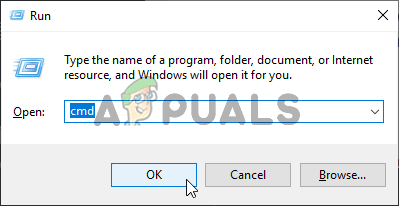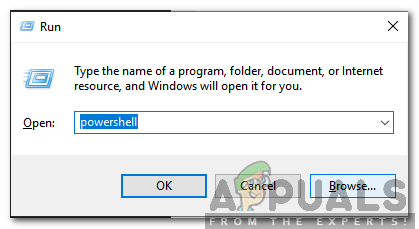How to Fix Microsoft Store Error 0x80131505
The 0x80131505 error is occurring when Windows 10 users are trying to access the Microsoft Store app. In most cases, the error code is displayed after a long period in which the Windows Store tries to load up. This problem is very serious since it effectively prevents affected users from downloading & updating UWP applications.

What’s causing the 0x80131505 Windows Store error code?
- Generic Store glitch – If the issue is being caused by a genetic glitch that was already documented by Microsoft, you should be able to fix it automatically by running the Windows Store Apps troubleshooter and applying the recommended repair strategy.
- Corrupted store cache – Windows Store cache can be the host to a series of corrupted files that might ultimately end up affecting your Windows Store ability to connect to the parent server. If this scenario is applicable, you can fix the issue by deleting the entire Windows Store cache manually or by using the WSReset.exe utility.
- Incomplete / Corrupted SoftwareDistribution data – It’s also possible that you’re encountering this issue due to corrupted or incomplete data that’s being stored in the SoftwareDistribution folder. In this case, you can fix the problem by resetting the sub-contents of the software distribution folder using a series of CMD commands.
- Store DLLs are no longer registered – As it turns out, it’s also possible that you’re encountering this issue due to the fact that some important Store components are no longer registered. In this case, you can fix the problem by using an elevated Powershell window to re-register all files.
- System file corruption – In rare circumstances, system file corruption can be the factor that will end up triggering this error code. If this scenario is applicable, the most convenable way of fixing the problem without any data loss is to run a couple of utilities (DISM and SFC) capable of dealing with system file corruption.
Method 1: Running the Windows Store Apps troubleshooter
Before you initiate other fixes, the ideal way to start is by testing to see if your Windows computer is capable of fixing the problem automatically. If you’re encountering the issue on Windows 10, chances are improved version of the classic troubleshooter will identify & apply an applicable repair strategy even more effectively.
If the 0x80131505 error is happening due to a generic issue like a corrupted cache folder, the steps below should allow you to fix the issue with minimal hassle. Here’s a quick guide on trying to fix the issue by running the Windows Store Apps troubleshooter.
- Open up a Run dialogue box by pressing Windows key + R. Next, type ‘control.exe /name Microsoft.Troubleshooting’ and press Enter to open up the Troubleshooting tab of the Settings menu.

Accessing the Activation troubleshooter Note: On Windows 10, you can use the newer interface by using the ‘ms-settings:troubleshoot’ command instead.
- Once you’re inside the Windows Troubleshooting window, go to the Find and Fix other problems and click on Windows Store Apps. Then, click on Run the troubleshooter to open up the utility.

Run Windows Store Apps troubleshooter - Once the troubleshooting utility is open, wait patiently until the initial scan is complete. Next, follow the on-screen prompts to apply the repair strategy that gets recommended (based on the type of issue that you’re having) by clicking on Apply this fix.

Apply this fix - Once the fix is applied, restart your computer once again and see if the utility has managed to fix the problem automatically once the next startup sequence is complete.
In case you’re still seeing the 0x80131505 error when trying to open the Microsoft Store app, move down to the next potential fix below.
Method 2: Deleting the Windows Store Cache
As it’s been confirmed by a lot of affected users, this problem can also occur due to one or more corrupted temp files that will ultimately inhibit your OS’s ability to establish and maintain connections between the UWP store and Microsoft servers.
In most cases, this problem is reported to occur after a security scanner ended up quarantining some dependencies used by Windows Store. If this scenario is applicable, you should be able to fix the issue by resetting the entire Windows Store cache using one of the methods presented below.
If you’re comfortable with imputing commands in a CMD terminal, follow Option 1 to reset the Windows Store cache using the WSReset.exe utility. If you prefer the GUI approach, follow Option 2 – it’s longer, but you can do it all from the Windows setting menus.
Resetting Windows Store via CMD
- Open up a Run dialog box by pressing Windows key + R. Next, type ‘cmd’ inside the newly appeared text box and press Ctrl + Shift + Enter to open up an elevated CMD window. At the User Account Control prompt, hit Yes to grant administrative privileges.

Opening an elevated Command Prompt from a Run dialog box - Inside the newly opened CMD prompt, type the following command in order and hit Enter to reset the entire Windows Store component (along with every dependency):
wsreset.exe
- As soon as the command is completed, close the elevated CMD window and restart your computer to see if the problem is fixed at the next system startup.
Resetting Windows Store via Settings menu
- Open up a Run dialog box by pressing Windows key + R. Next, type ”ms-settings:appsfeatures’ and hit Enter to open up the Apps & Features menu of the Settings window.
- After you manage to get inside the Apps & Features window, make your way through the list of installed UWP applications and locate the entry associated with Microsoft Store.
- Once you see it, look directly below under it and you should spot a hyperlink named Advanced Options (under Microsoft Corporation). Click on it once to open the Advanced Options menu.
- Click the Reset button, then confirm to initiate the process of cleaning out the Microsoft Store Cache.
- Wait patiently until the operation is complete, then restart your machine and see if the problem is resolved at the next system startup by attempting to open up the Microsoft Store once again.

If the same 0x80131505 error is still occurring, move down to the next method below.
Method 3: Clearing data from the SoftwareDistribution folder
As it turns out, this problem can also surface in case the SoftwareDistribution folder that’s being used by WU (Windows Update) contains corrupted data. In this case, you should be able to fix the problem by resetting the sub-contents of the software distribution folder using a series of CMD commands.
IMPORTANT: Before you do this, it’s important to ensure that that your computer is not connected to the Internet. With this in mind, ensure that your Wi-Fi is disabled or the ethernet cable is physically disconnected from your PC. Unless you do this, Windows 10 will give the signal that some files cannot be modified, so the command will not be successful.
Once you’ve ensured that internet access is disabled, follow the instructions below to clear data from the SoftwareDistribution folder:
- Open up a Run window by pressing Windows key + R. Next, type ‘cmd’ inside the run box, then press Ctrl + Shift + Enter to open up an elevated CMD prompt. When you see the UAC (User Account Control), click Yes to grant administrative privileges.

Running Command Prompt - After you manage to get inside the elevated Command Prompt, type the following commands in order and press Enter after each command to reset the SoftwareDistribution folder:
net stop cryptSvc net stop bits net stop msiserver ren C:\Windows\SoftwareDistribution SoftwareDistribution.old rmdir C:\Windows\SoftwareDistribution\DataStore rmdir C:\Windows\SoftwareDistribution\Download net start cryptSvc net start bits net start msiserver
Note: This series of commands will first stop the services that might interfere with this operation, then rename the folder and delete the DataStore and Download folders before re-enabling the previously disabled services.
- Once every command has been processed successfully, close the elevated CMD prompt and restart your computer to ensure that the changes are enforced.
- At the next startup sequence, attempt to start Windows Store once again and see if the issue is now resolved.
Method 4: Re-registering the Store App
Another scenario in which this issue will occur is an instance where some files belonging to the Windows Store component have become de-registered. If this scenario is applicable to your current situation, you should be able to fix the issue by using Powershell to re-registering the Store app.
Here’s a quick guide on using an elevated PowerShell window to re-register the Store app:
- Press Windows key + R to open up a Run dialogue box. Inside the next menu, type ‘powershell’ and press Ctrl + Shift + Enter to open up an elevated Powershell window. When you see the UAC (User Account Control) window, click Yes to allow it to open with admin access.

Typing in “Powershell” and pressing “Shift” + “Alt” + “Enter” - Once you’re inside the elevated Powershell window, type the following command and press Enter to re-register the Windows Store component:
Get-AppXPackage *WindowsStore* -AllUsers | Foreach {Add-AppxPackage -DisableDevelopmentMode -Register "$($_.InstallLocation)\AppXManifest.xml"} - After the command is complete and successfully processed, restart your computer and see if the issue is resolved at the next system startup
If the same 0x80131505 error is still occurring, move down to the final potential fix below.
Method 5: Running SFC and DISM scans
If none of the potential fixes above has allowed you to fix the 0x80131505 error, it’s very likely that you’re encountering this issue due to some kind of system file corruption. as it turns out, in certain circumstances, this can end up breaking your PCs ability to access the Microsoft Store.
In this case, you should be able to fix the problem swiftly with a series of built-in utilities (DISM and SFC).
Both System File Checker and Deployment Image Servicing and Management are built-in tools that are designed to deal with those instances where corrupted system files are causing certain components to stop working.
Since SFC is better at fixing logical errors and DISM is superior at replacing corrupted dependencies, we encourage you to run both scans in order to improve your chances of fixing the issue.
Here’s a quick guide on running both utilities in order to resolve the 0x80131505 error code:
- Press Windows key + R to open up a Run dialog box. Once you’re inside the Run box window, type ‘cmd’ and press Ctrl +Shift + Enter to open up an elevated command prompt. Then, click Yes at the UAC prompt to grant administrative access.

Opening the Command Prompt - Once you’re inside the elevated Command Prompt, type the following command and press Enter to initiate an SFC scan:
sfc /scannow

Running SFC Note: This utility uses a locally cached copy to replace corrupted files with healthy copies. It’s important that you don’t interrupt this process once you get this started – Doing this exposes your system to other types of system file corrupted.
- Once the scan is finished, restart your computer. At the next startup, follow step 1 again to open up another elevated CMD window. Then, type the following command line and hit Enter to initiate a DISM scan:
DISM /Online /Cleanup-Image /RestoreHealth
Note: Keep in mind that DISM requires a stable internet connection since it uses the WU (Windows Update) component to download healthy copies in order to replace corrupted instances.
- After the process is complete, restart your computer and see if the issue is resolved at the next computer startup.




